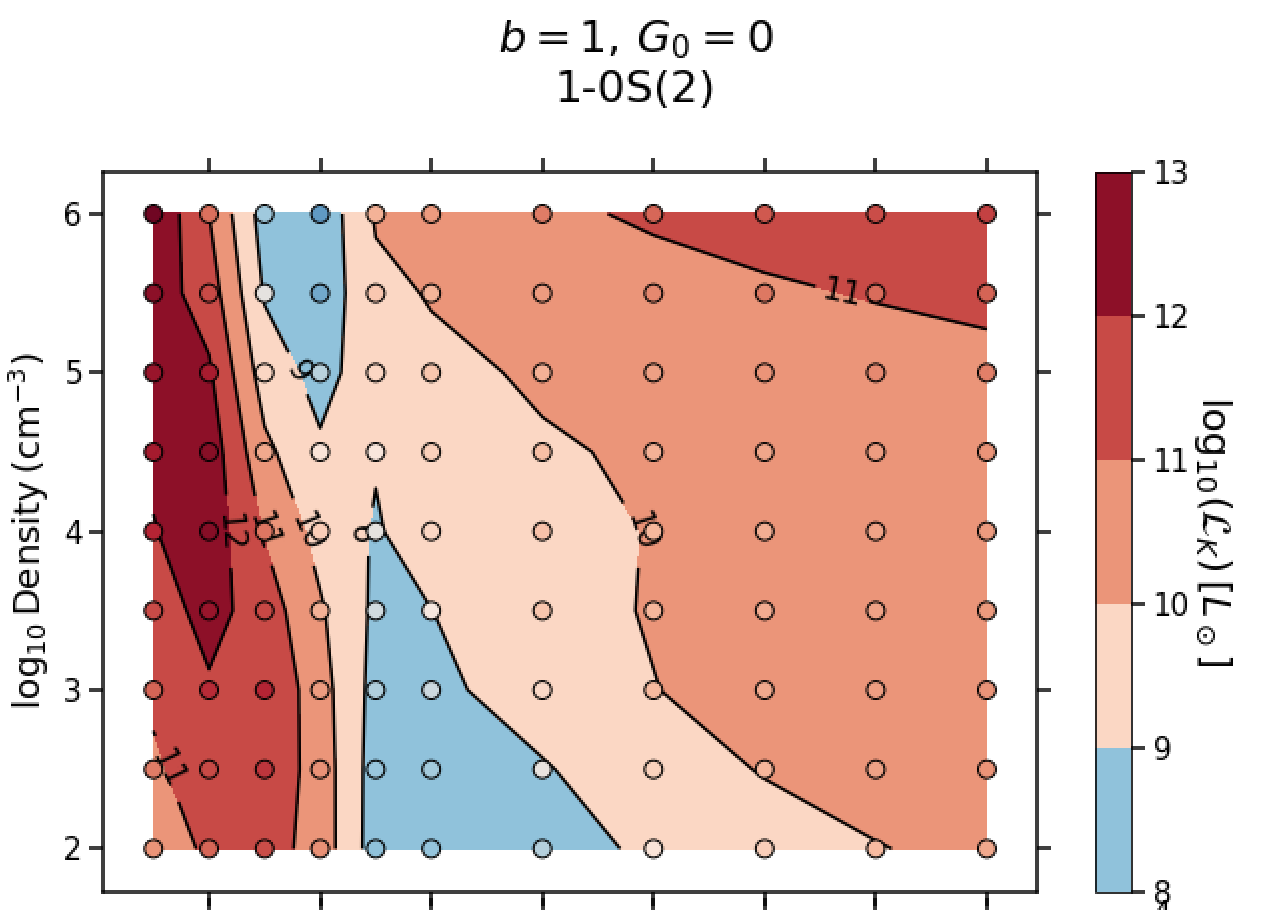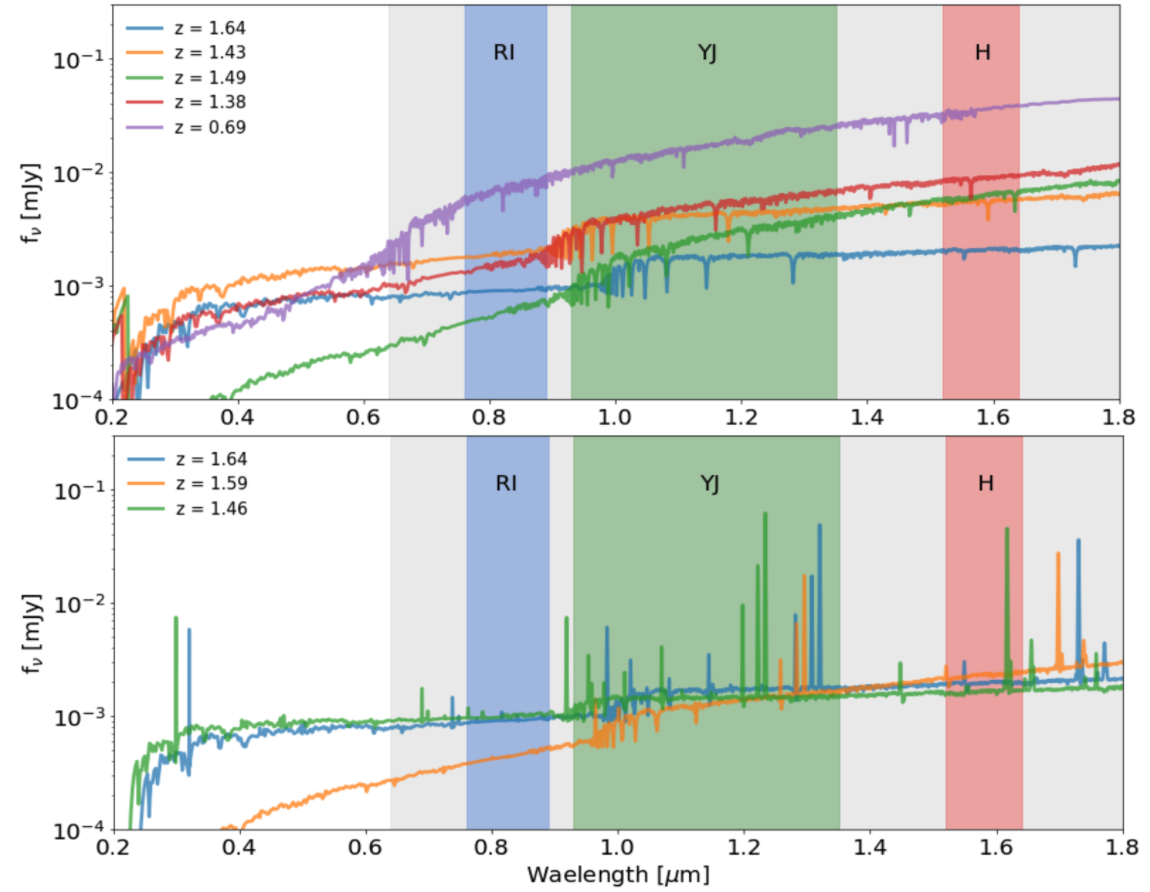
I am a Colombian astronomer from Medellín, Colombia. I obtained my Ph.D. in Astrophysics and Cosmology from the Aix-Marseille Université at Laboratoire d'Astrophysique de Marseille in France. Currently, I am a postdoctoral reseacher at École normale supérieure. I work in the extragalactic field, studying galaxy formation and evolution. In particular, studying molecular shocks, mechanical energy dissipation, dust attenuation, and star formation.
My current work focuses on understanding molecular emission (e.g., H2 rotational and rovibrational transitions) in radio galaxies through molecular shocks. The main idea of the research project relies on the comparison of current observations of H2 emission, [CII], and [OI] with shock and PDR models. For the modeling, we use the Paris-Durham shock code to generate thousands of models that can be compared to Spitzer and Herschel's observations in preparation for JWST data.
My past work focused mainly on analyzing spectro-photometric samples of galaxies at cosmic noon. For this, I used CIGALE to perform SED fitting with an updated version of the nebular module. I was mostly interested in using emission lines like Ha, Hb, [NII], [SII], and [OIII] along with samples covering ultra-violet to infrared photometry. My study focused on deriving accurate estimates of stellar mass, star formation rate, and dust attenuation for the emission lines.
I am part of the Multi-Object Optical and Near-infrared Spectrograph (MOONS) collaboration working on the production of mock spectra samples with CIGALE to test the simulation software and check the physical parameter estimation.
Besides my work in Astronomy, I like walking around and taking pictures of nature, building,s and landscapes. Biking and hiking are my favorite sports. I really enjoy watching the night sky with my telescope and explaining to people about the constellations.
List of Projects

Self-irradiated shocks (H2 emission)
During my postdoctoral research position at LPENS, I am
investigating the energy budget of galaxies using molecular emission. Using a grid of shock models created using
the Paris-Durham shock code
we are able to analyse the molecular emission in galaxies produced by shocks and retrieve the mechanical power that is dissipated from the large to small
scales. In doing so, we use the molecular hydrogen (i.e., H2) eission focousing on pure vibrational and ro-vibrational transitions. The complete analysis of
molecular emission under the self-irradiated shock frameworks sheds light on the mechanisms of energy dissipaction in the galaxies' ISM.

RECA Mentorship
The Network of Colombian Astronomy Students (RECA) is an association that
helps to create and mantain the link between Colombian astronomy students around the world. As part of the network, I am involved in both the
mentorship program (RECA mentorship) that
focouses in guiding students to pursue a professional carrier in Astronomy and the organizing committee 2022-2023.
For more information about the different activities carried out by RECA visit: RECA website.

Mock spectra catalog simulations
As part of the MOONS collaboration I am in charge of creating mock spectra samples using CIGALE.
Currently, I am SED fitting galaxies in the COSMOS field using the COSMOS2015 catalog. The fit only includes photometry but I use CIGALE
to model continuum, and continuum+lines. I have been testing this on a small sample of galaxies with FMOS observations to check the accuracy of the
emission line modeling. Extending the results to the whole sample of galaxies in the COSMOS field and other fields is an ongoing process.
The mock catalogs will be available soon to the entire Astronomy community at the CESAM ASPIC website.